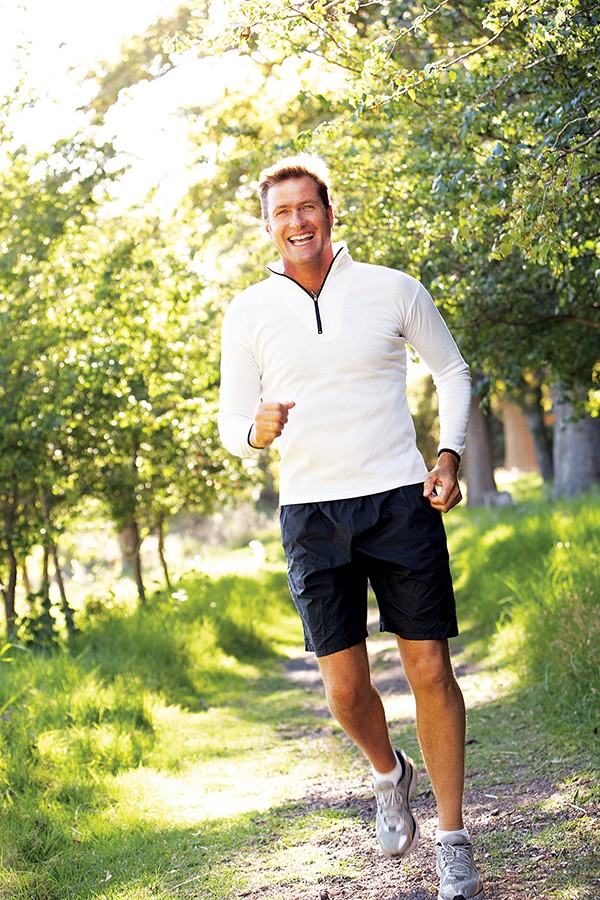Why is sugar so bad, anyway? Let’s talk about what it is in the first place. When sugar enters your bloodstream via a donut or fat-free salad dressing, your body breaks it down into two simple sugars:
Glucose, which is found in every living cell on Earth. If we don’t get it from our diet, our bodies produce it. It enters our cells from our bloodstream and is regulated by the hormone insulin.
Fructose: Our bodies do not produce this, and we don’t need it.
In small amounts, the liver turns fructose into glycogen and hangs on to it in case we need it for energy. However, if there is already enough glycogen in the liver (there usually is), the fructose is stored as fat. This creates a fatty liver. A fatty liver creates “non-alcoholic fatty liver disease.” Basically, this means your liver starts to look like salami.
Too much sugar leads to what is called “insulin resistance.” Insulin controls the amount of glucose that enters our cells. If there is too much, our body develops a resistance to the regulatory efforts of the insulin, and the glucose levels spike. That can lead to metabolic syndrome, which is a combination of high blood pressure, high cholesterol, and belly fat.

What is happening when we get a desire for something sweet?
A craving is not the same as hunger. Hunger is a combination of signals produced by your body. When energy reserves get low, a hormone called ghrelin lets the brain know. The brain then responds with a hormone called neuropeptide Y, which starts stimulating our appetite. Once we start eating, in order to keep us from gorging ourselves, our fat tissues start releasing a hormone called leptin as an appetite suppressant. This signal does not reach the brain instantly, so sometimes we eat until we are overstuffed.
Sugar cravings are not created by hormones and are not necessary for our survival. They are created by the brain wanting its reward system activated. When we eat sugary or fatty foods, our body releases opioids into our brain, which bind to neural receptors and make us feel good.
Candy, donuts, cake, etc. also trigger the release of dopamine and serotonin, which regulate our moods. When we eat those kinds of foods, we are basically convincing our brains that everything is awesome and it can go ahead and release the feel-good chemicals. The brain remembers that feeling and wants it again.
Hunger pains are sometimes not as intense as a craving. In addition, we create sensory memories of food, and sweets and fatty foods can be very good at bringing back warm feelings of sharing meals with friends and loved ones.
Humans can get addicted to sugar quickly, and that can create health issues. I’m not saying never eat dessert again, but sometimes we need to take action to cut back on the late-night candy bars or too many trips to the vending machine. What can we do to beat those cravings?
Be patient with yourself. You didn’t create your sweet tooth overnight, so it’s not going to go away immediately. Some research suggests that our cravings for certain foods were formed in the womb! The important part is to keep trying.
Pay attention to the timing of your cravings. If they always hit around the same time, you can take steps to cut them off before they happen. Keep healthier snacks around when possible, and munch on them about 20 minutes or so before your craving normally hits. Lean meats, veggies, avocados, fruits, and nuts can all help keep your blood sugar regulated and the cravings at bay.
Hydrate. Dehydration causes low energy, which can cause sugar cravings. You can get water from fruits and veggies also.
Do some light exercise. Walk, do some jumping jacks, pushups, etc. Exercise produces some of the same chemicals sugary foods do. It’s amazing how quickly a little movement can improve your mood.
Tell someone about it. Studies show that people who ignore their cravings give into them a lot more frequently. Let a friend know you when you are struggling.
Take a hot shower. This is obviously a somewhat extreme response, and one that’s not always available, but I bet you’ve never gotten out of the shower and thought “I really want a candy bar right now!”
Just decide to stop eating so many sweets. If you don’t commit to it, it won’t happen. Our brains are great at convincing us we need stuff we don’t. Make a decision to quit. You can do it. It just takes a little determination and a little knowledge.
Mark Akin is a personal trainer and co-owner of Envision Fitness. Contact him at Mark@envisionmemphis.com.
 Monkey Business Images | Dreamstime.com
Monkey Business Images | Dreamstime.com  Lunamarina | Dreamstime.com
Lunamarina | Dreamstime.com  Lunamarina | Dreamstime.com
Lunamarina | Dreamstime.com